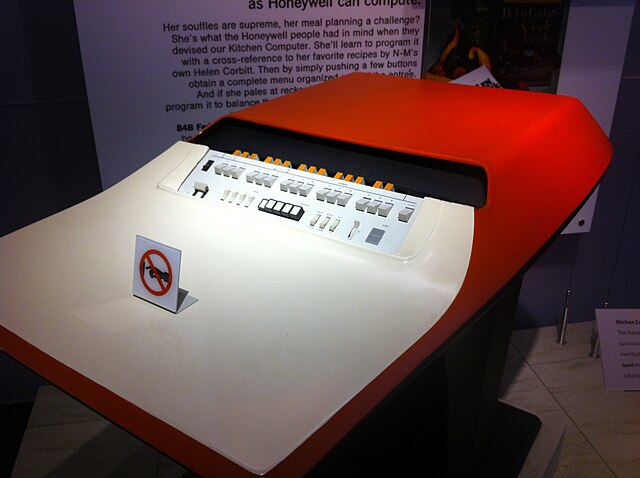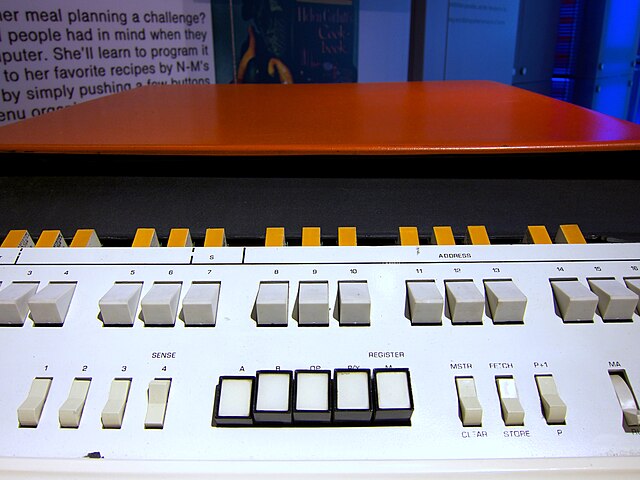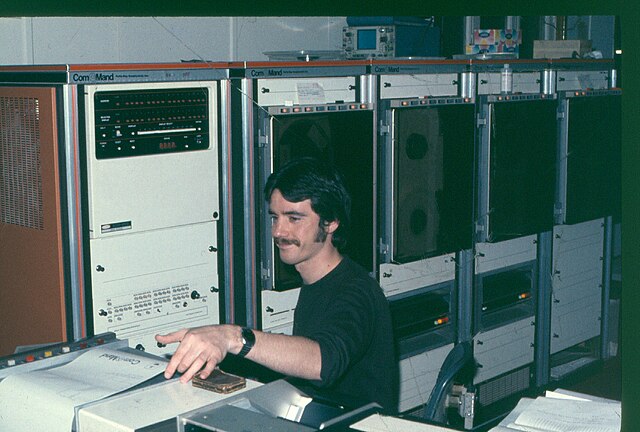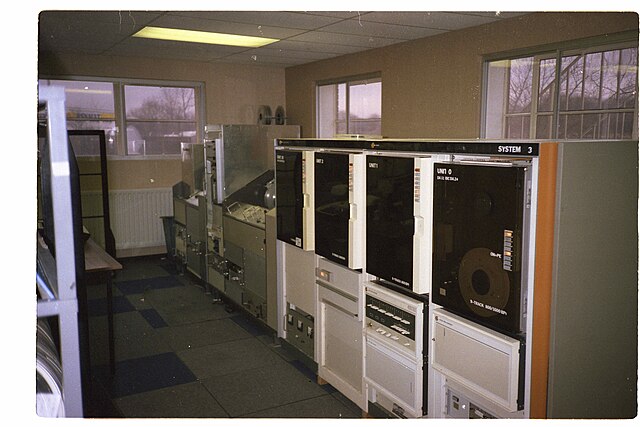The Honeywell 316 was a popular 16-bit minicomputer built by Honeywell starting in 1969. It is part of the Series 16, which includes the Models 116, 316 (1969), 416 (1966), 516 (1966) and DDP-716 (1969). They were commonly used for data acquisition and control, remote message concentration, clinical laboratory systems, Remote Job Entry and time-sharing. The Series-16 computers are all based on the DDP-116 designed by Gardner Hendrie at Computer Control Company, Inc. (3C) in 1964.
Honeywell 316
A Honeywell 316 at the Computer History Museum
Honeywell 316 control panel
Front panel of H316 in a desktop case
A minicomputer, or colloquially mini, is a type of smaller general-purpose computer developed in the mid-1960s and sold at a much lower price than mainframe and mid-size computers from IBM and its direct competitors. In a 1970 survey, The New York Times suggested a consensus definition of a minicomputer as a machine costing less than US$25,000, with an input-output device such as a teleprinter and at least four thousand words of memory, that is capable of running programs in a higher level language, such as Fortran or BASIC.
Six different minicomputers (out of many more models) produced by the Digital Equipment Corporation (DEC) with the year of introduction in brackets: First row: PDP-1 (1959), PDP-7 (1964), PDP-8 (1965); second row: PDP-8/E (1970), PDP-11/70 (1975), PDP-15 (1970).
Data General Nova, serial number 1, on display at the Computer History Museum
Raytheon RDS 500 seismic processing system in Benghazi in 1978
Varian Data Machines system connected to analogue tape playback system in 1984








